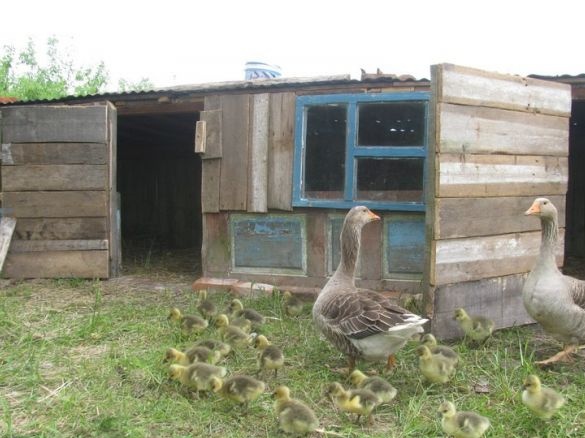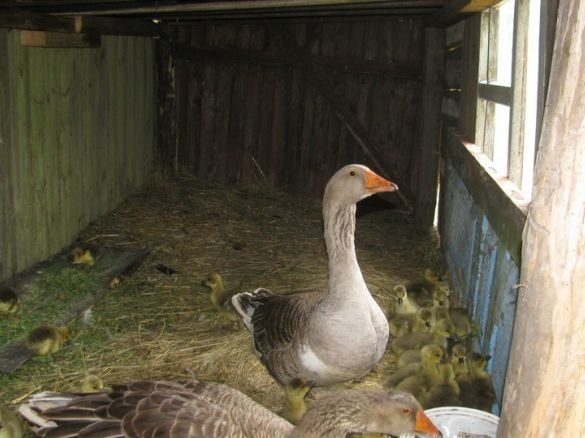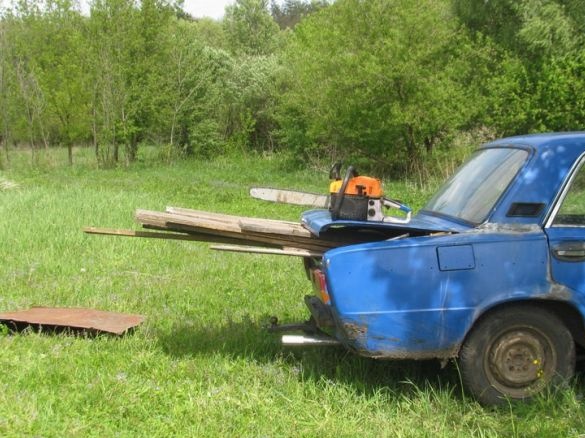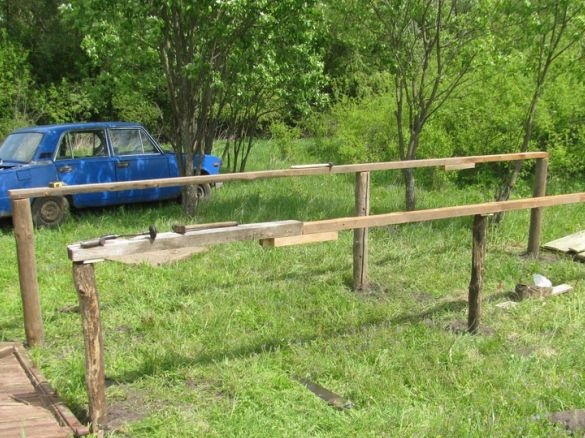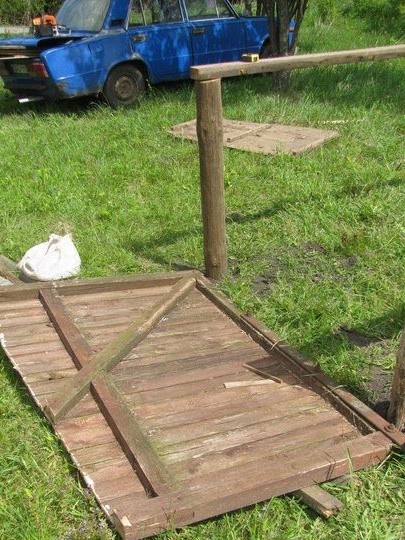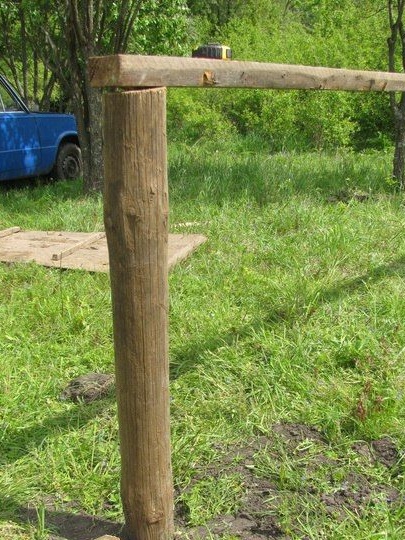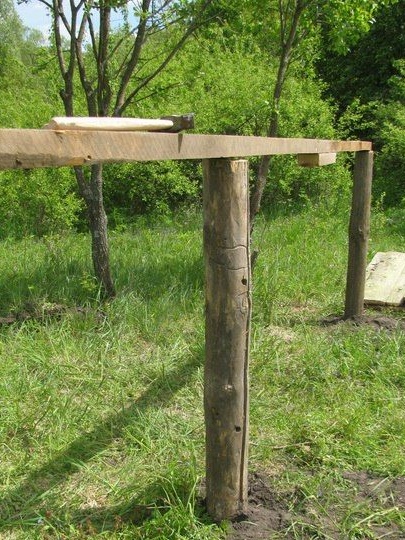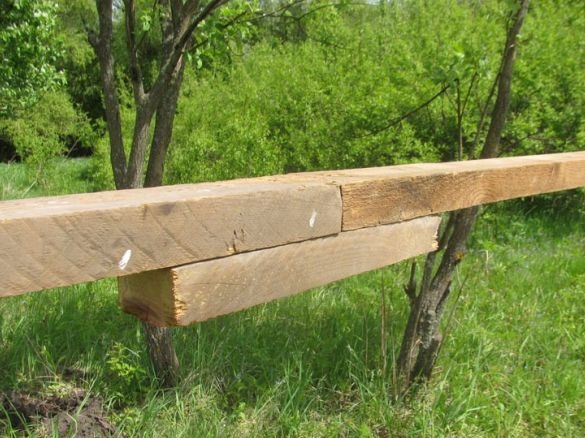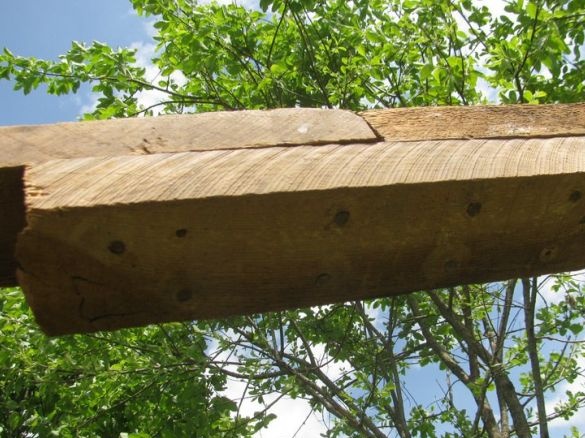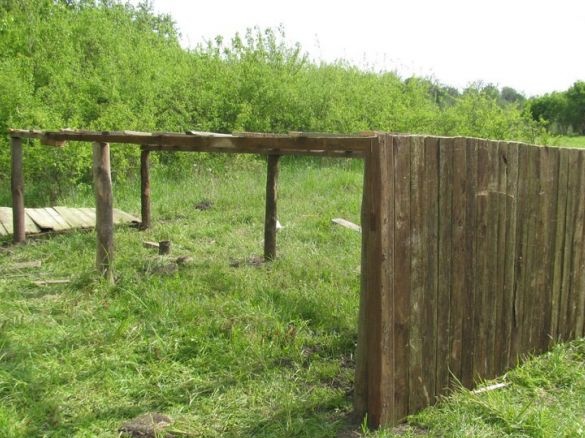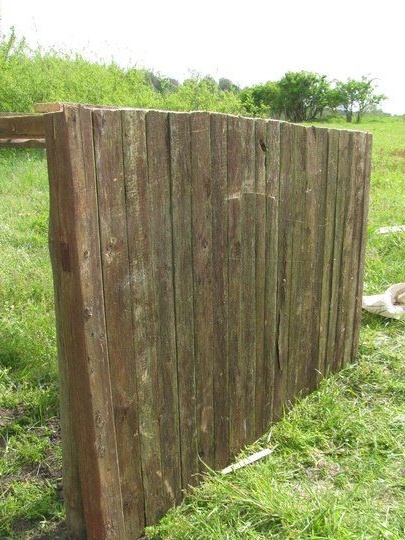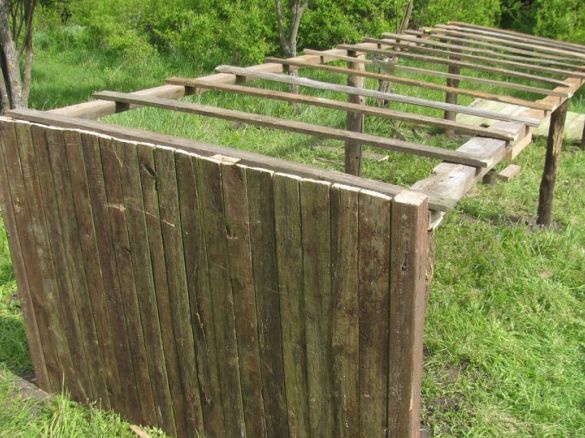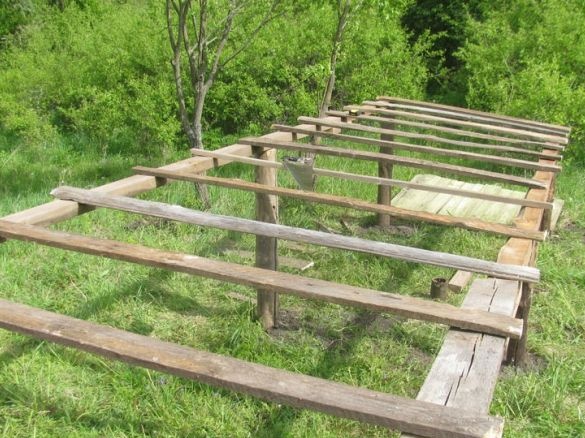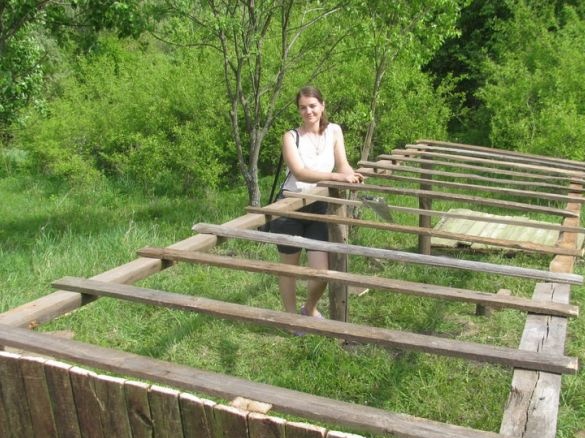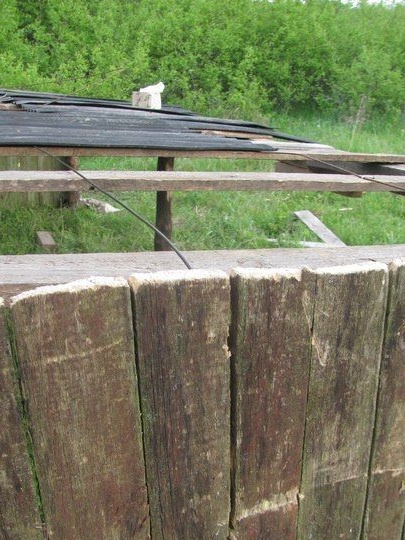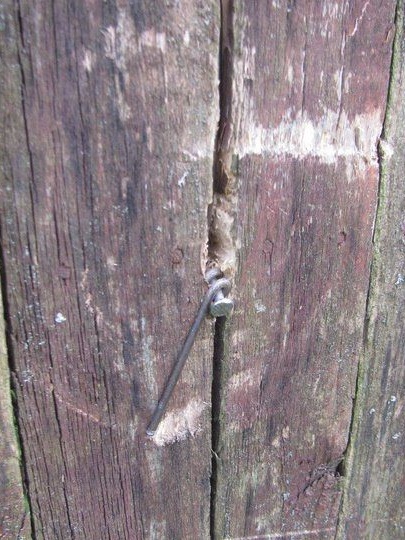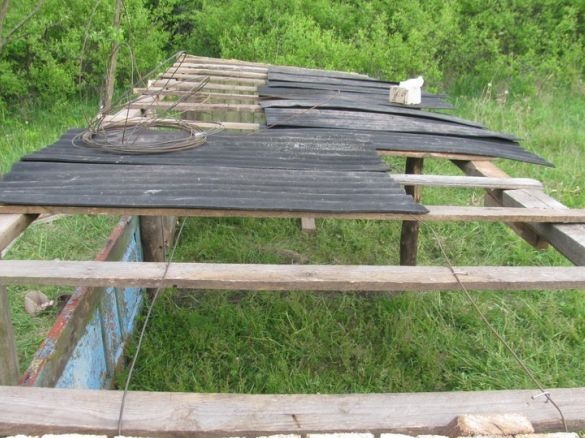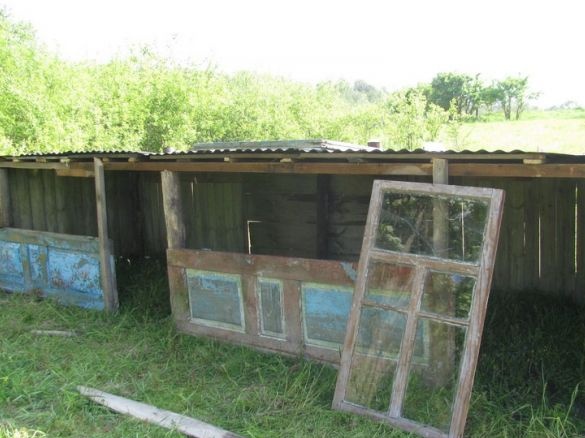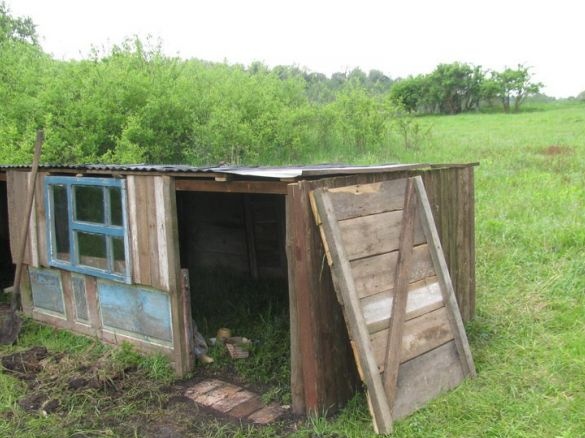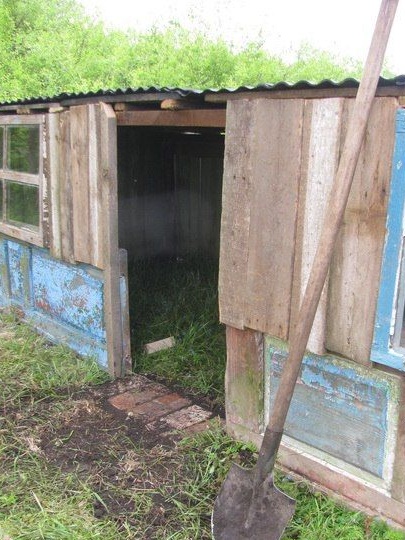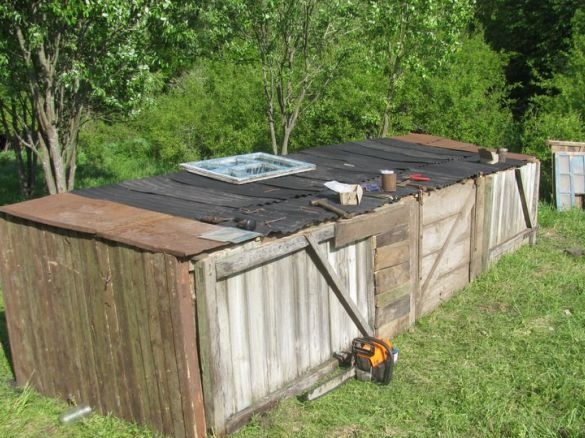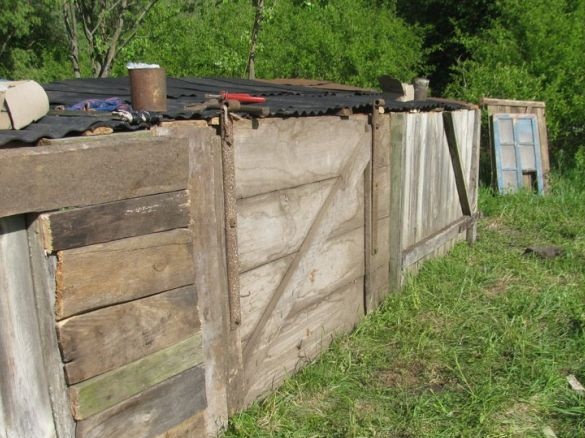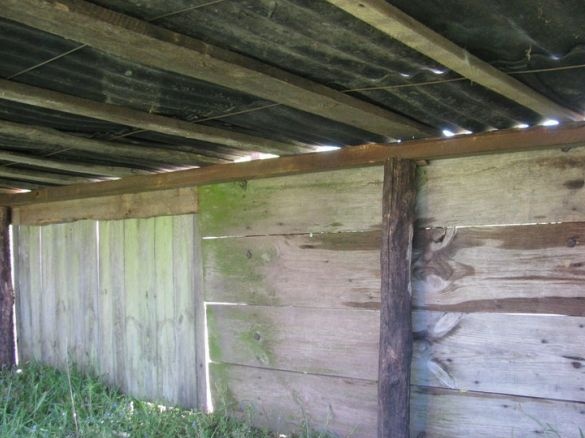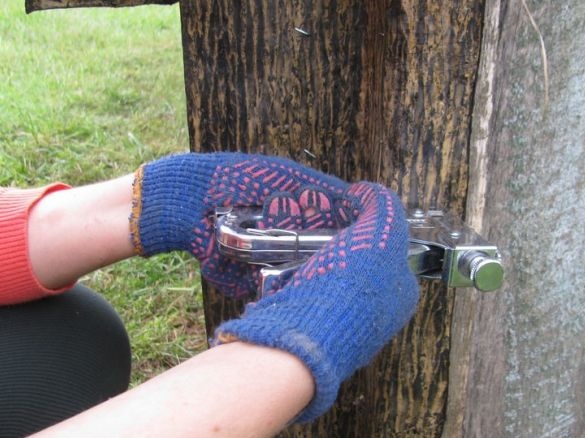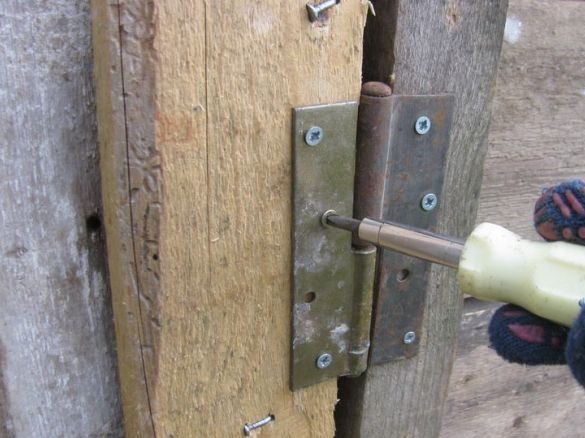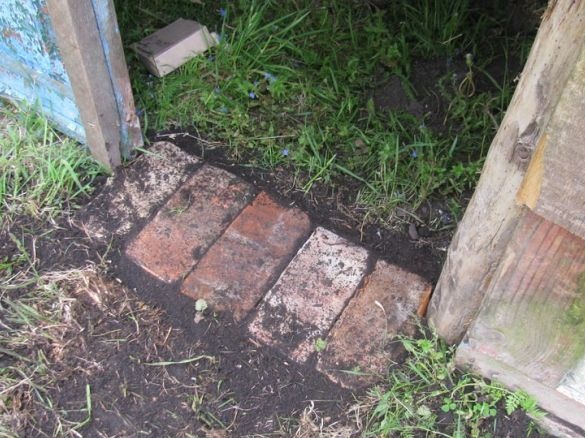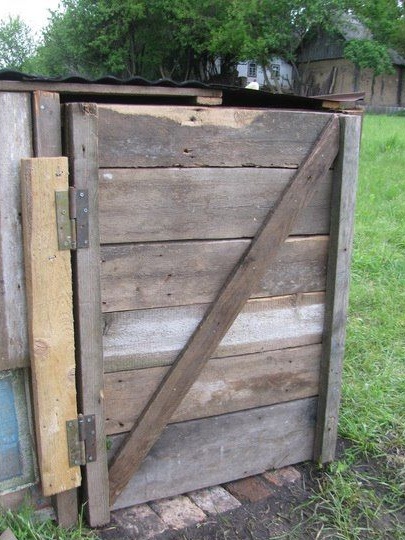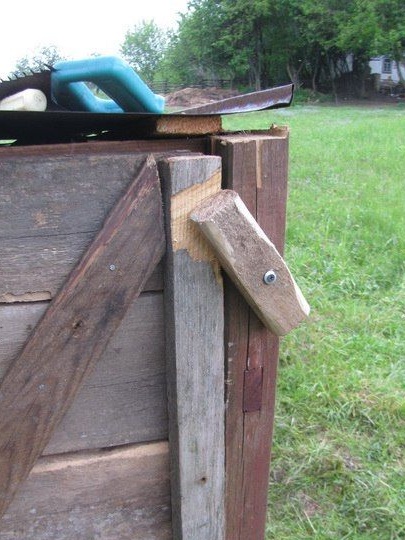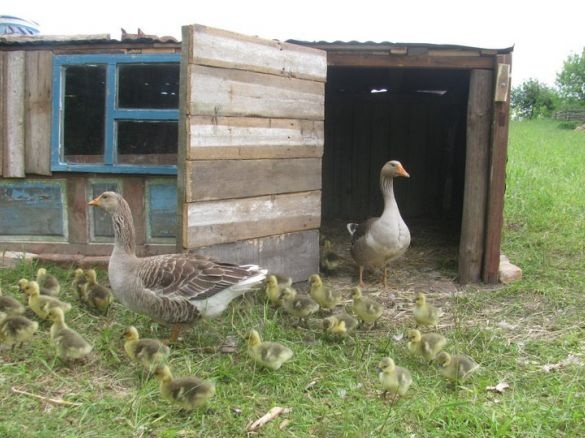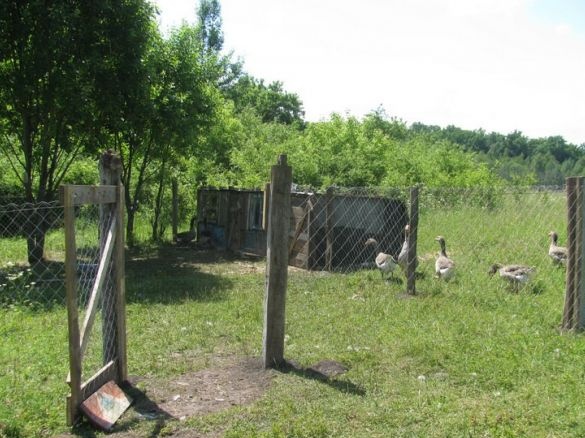In the spring, we had a serious need for housing for geese, because their number was up to 100 pieces. Despite the fact that the goose can be considered quite a tenacious bird, small goslings are quite at risk for getting sick if they do not create the proper conditions. Firstly, they are afraid of drafts and rain, since they still do not have large oily feathers, as in adults.
Secondly, if you keep a lot of goslings in a small area, they will die due to a crush.
In addition to home, goslings still need grass, a corral for healthy and active growth. So we decided to build a house for them with a corral, and since there is a problem with the materials, we collected them in abandoned houses in the neighborhood.
Materials and tools for construction:
Instruments:
- a hacksaw (chainsaw or electric saw);
- drill;
- hammer;
- roulette;
- stapler.
Materials:
- the old gate (two of us went to the side walls and one more to the back part);
- roofing material (in our case, “rubber slate”);
- steel wire;
- columns;
- old windows from the house;
- a few boards and bars;
- mesh netting (for corral);
- nails (70, 100 ...);
- old doors;
- roofing material or the like.
The process of building a house:
Step one. Layout and installation of columns
First you need to determine the size of the house and make markup. Pegs were previously driven into the places where the columns were buried. The size was determined depending on the amount of roofing material.
Well, then a shovel went into play. In total, 6 columns were buried. Then we filled the bars on these posts. Since they were of different lengths, we connected them and thereby lengthened. To connect, a piece of the bar was used, in which I drilled holes and then hammered nails.
Step Two Side walls of the house
To create the side walls, two gates were used. Their bottom was already rotten, so cutting them was not a pity. With the help of a chainsaw, the gates were cut as needed, and then installed in their places. As a result, the walls were built quickly and reliably.
Step Three Roof lathing
Probably the most interesting part in the construction is the roof battens. We have it combined, since there was not the right amount of materials.
At first, wooden boards were packed on the boards. They thought that was enough. However, during the installation of the "rubber" slate, it turned out that the step is too wide and the sheets sag, and in the sun such a roof softens and completely fails.
There were no more boards, what should I do? The solution was the use of steel wire as a lathing. This wire was once used to broadcast radio in villages. We pulled it along the house, fixing at the edges with the help of nails.
Well, subsequently, the roofing material was nailed with nails.
On the sides of the roof we nailed a steel sheet, which I cut in half with a grinder.
Step Four Construction front wall of the house
Doors and windows should be located in front so that the goslings do not sit in the dark. To build a part of the front wall, we used two doors (previously they were installed inside the houses).
Further over the doors we nailed the windows, the remaining openings were sewn up with boards. Well, now, finally, it remains to make the front doors. They assembled from scratch from the remaining bars and boards.
Step Five Rear wall assembly
The old doors, a piece of the gate, boards were left to create the back wall ... Actually, the crawler is almost ready for this, you just need to hammer in large cracks so that the predator doesn’t penetrate the wind like a weasel, marten, rat, etc. However, the geese are pretty angry birds and are unlikely to let the enemy go to their children.
Step Six The final stage of the construction of the house. House sheathing
When I climbed into the built house, I found many cracks through which a draft blew quite strongly. This problem had to be solved. The solution was to use pieces of roofing material and a black film for flooring. The back wall of the house was sheathed with these materials. For simplicity of work, a stapler was used for cladding.
The finishing touch was the creation of a threshold under the door. It was made of bricks. Also, locks were made from pieces of timber for doors.
Seventh step. Aviary construction
The aviary was built quite quickly, the greatest difficulty was digging holes under the posts, this process would greatly facilitate the garden drill. To prevent the grid from sagging, there should be as many columns as possible. The grid we walked 10 m, for each roll you need 3 columns. In other words, at least every 5 meters you need to dig a column.
In addition, for the installation of a chain-link, it is necessary to wire from below and above. If it is not from below, then a fox will easily crawl under it, and indeed geese. If a fox crawls into such a fencing, it can transmit dozens of goslings at once in a fit of instinct. If the wire is not up, the grid will sag.
For ease of installation, we first deployed a roll of mesh on the ground and inserted wire into it. Well, then they raised the net, and I fastened the wire to the posts with the help of nails.
It’s quite troublesome to work with the grid, it is constantly confused, twisted and so on. I would not have the patience to work with her, but Masha immediately fixed such problems.
The mesh should be tightly stretched between the posts and fixed with nails. The stronger you pull, the less it will go. It seems that we took 3 rolls to build an aviary.
The final stage was the construction of the enclosure gate. It was made from the remaining mesh.
In conclusion, we can say that the house turned out to be quite successful. The disadvantage is that it is very hot in the summer, as for a person. Well, geese ... probably just right. However, they only sleep in it. It’s hot because the roof is black and very hot.
Another disadvantage can be considered a large cell netting. When the goslings were still too small, they stuck in it. But then they quickly grew, and this ceased to be a problem.
In general, the house was built mainly for spring and not a single caterpillar fell ill with us.


